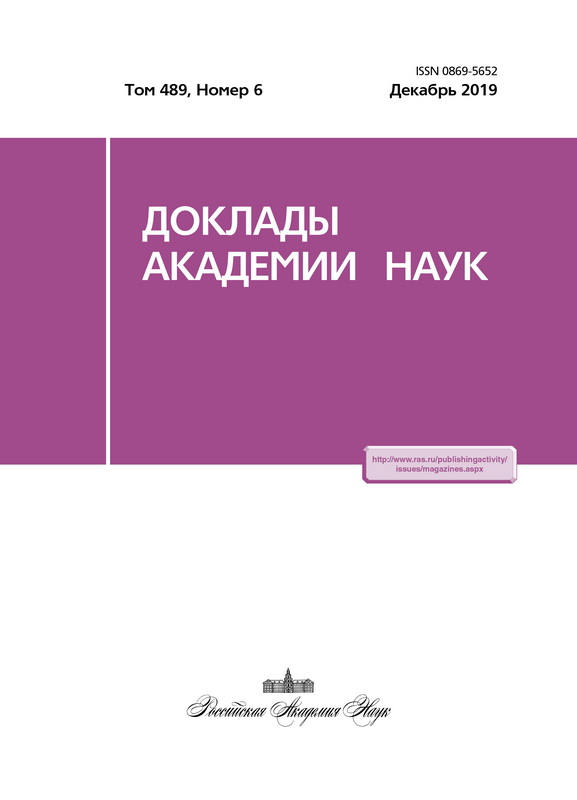The novel dipeptide ligand of TASP
- Authors: Deeva O.A.1, Pantileev A.S.1, Rybina I.V.1, Yarkova M.A.1, Gudasheva T.A.1, Seredenin S.B.1
-
Affiliations:
- State Foundation Institute of Pharmacology of the Russian Academy of Medical Sciences
- Issue: Vol 484, No 2 (2019)
- Pages: 228-232
- Section: Biochemistry, biophysics, molecular biology
- URL: https://journals.eco-vector.com/0869-5652/article/view/11736
- DOI: https://doi.org/10.31857/S0869-56524842228-232
- ID: 11736
Cite item
Abstract
Using the previously obtained first dipeptide ligand TSPO the N‑carbobenzoxy-L‑tryptophanyl-L‑isoleucine amide (GD‑23) as a basis, the new dipeptide was synthesized — the N‑phenylpropionyl–L‑tryptophanyl-L‑leucine amide (GD‑102). GD‑102 expressed anxiolytic activity in the open field test in BALB/c mice and in the elevated plus maze test in ICR mice. The minimum effective dose of GD‑102 was an order of magnitude lower than that of GD‑23. Preliminary administration of the TSPO selective antagonist, compound PK11195, completely blocked the anxiolytic activity of GD‑102, that indicated the participation of TSPO in the realization of the anxiolytic action GD‑102. The results were confirmed by molecular docking data.
Keywords
Full Text
About the authors
O. A. Deeva
State Foundation Institute of Pharmacology of the Russian Academy of Medical Sciences
Email: tata-sosnovka@mail.ru
Russian Federation, 8, Baltiyskaya street, Moscow, 125315
A. S. Pantileev
State Foundation Institute of Pharmacology of the Russian Academy of Medical Sciences
Email: tata-sosnovka@mail.ru
Russian Federation, 8, Baltiyskaya street, Moscow, 125315
I. V. Rybina
State Foundation Institute of Pharmacology of the Russian Academy of Medical Sciences
Email: tata-sosnovka@mail.ru
Russian Federation, 8, Baltiyskaya street, Moscow, 125315
M. A. Yarkova
State Foundation Institute of Pharmacology of the Russian Academy of Medical Sciences
Email: tata-sosnovka@mail.ru
Russian Federation, 8, Baltiyskaya street, Moscow, 125315
T. A. Gudasheva
State Foundation Institute of Pharmacology of the Russian Academy of Medical Sciences
Author for correspondence.
Email: tata-sosnovka@mail.ru
Сorresponding Member of the RAS
Russian Federation, 8, Baltiyskaya street, Moscow, 125315S. B. Seredenin
State Foundation Institute of Pharmacology of the Russian Academy of Medical Sciences
Email: tata-sosnovka@mail.ru
Аcademician of the RAS
Russian Federation, 8, Baltiyskaya street, Moscow, 125315References
- Rupprecht R., Papadopoulos V., Rammes G., Baghai T.C., Fan J., Akula N., Groyer G., Adams D., Schu-macher M. // Nat. Rev. Drug Discovery. 2010. V. 9. P. 971–988.
- Hosie A.M., Wilkins M.E., Smart T.G. // Pharmacol. Ther. 2007. V. 116. № 1. P. 7–19.
- Гудашева Т.А. // Изв. РАН. Сер. хим. 2015. № 9. С. 2012–2021.
- Гудашева Т.А., Деева О.А., Мокров Г.В., Ярков С.А., Яркова М.А., Середенин С.Б. // ДАН. 2015. Т. 464. № 3. С. 361–364.
- Гудашева Т.А., Деева О.А., Яркова М.А., Середенин С.Б. // ДАН. 2016. Т. 469. № 5. С. 621–624.
- Середенин С.Б., Гудашева Т.А., Деева О.А., Мокров Г.В., Ярков С.А., Яркова М.А., Жердев В.П., Дур- нев А.Д., Алексеев К.В., Незнамов Г.Г. Замещенные дипептиды с нейропсихотропной активностью. Пат. РФ № 2573823. М., 2014.
- Jaremko L., Jaremko M., Giller K., Becker S., Zweck-stetter M. // Science. 2014. V. 343. P. 1363–1366.
- Schrödinger Release 2015–4: Maestro. Vers. 10.4. N.Y.: Schrödinger, 2015.
- Середенин С.Б., Ведерников А.А. // Бюл. эксперим. биологии и медицины. 1979. Т. 88. № 7. C. 38–40.
- File S. E. // Behav. Brain Res. 2001. V. 125. P. 151–157.
- Atsuko Kita, Hitoshi Kohayakawa, Tomoko Kinoshita, Yoshiaki Ochi, Keiko Nakamichi, Satoshi Kurumiya, Kiyoshi Furukawa, Makoto Oka // Brit. J. Pharmacol. 2004. V. 142. P. 1059–1072.
Supplementary files








